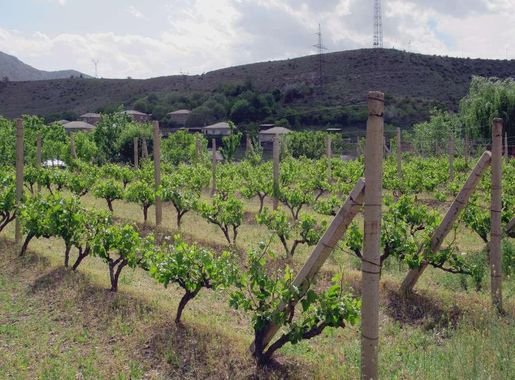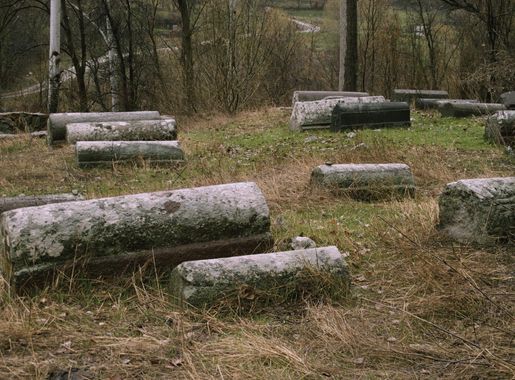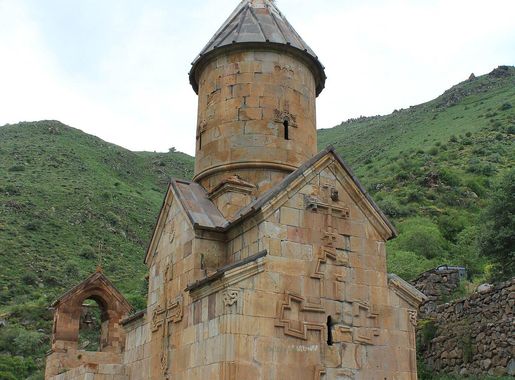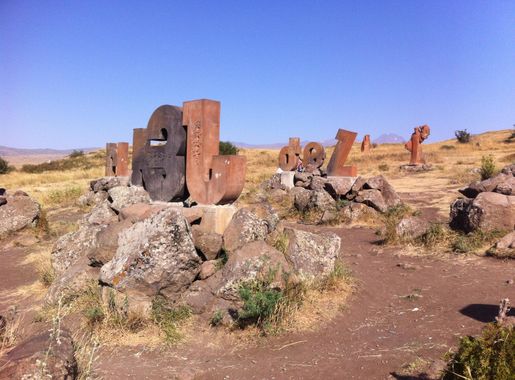
Vayots Dzor: Armenia's Hidden Gem
Discover Vayots Dzor, Armenia's hidden gem, offering rich history, stunning landscapes, ancient wineries, and relaxing thermal spas for a perfect getaway.
Vayots Dzor Region, nestled in the southern part of Armenia, is a treasure trove of natural beauty and historical richness. Known for its picturesque landscapes, this region offers a blend of rugged mountains, lush valleys, and serene rivers. One of the main attractions is the Noravank Monastery, a stunning 13th-century religious site set against a backdrop of red cliffs. The monastery's intricate carvings and breathtaking views make it a must-visit. The region is also famous for its wineries, particularly in the town of Areni. Here, you can explore ancient wine caves and taste some of the finest Armenian wines. The Areni-1 cave complex is particularly noteworthy, as it houses the world's oldest known winery, dating back over 6,000 years. This makes Vayots Dzor a fascinating destination for both history buffs and wine enthusiasts. For adventure seekers, Vayots Dzor offers numerous hiking trails and outdoor activities. The Jermuk resort town is famous for its thermal mineral waters and health spas. Visitors can enjoy a relaxing soak while taking in the stunning mountain scenery. Whether you're interested in history, nature, or simply looking to unwind, Vayots Dzor Region has something for everyone.
Local tips in Vayots Dzor Region
- Visit Noravank Monastery early in the morning to avoid crowds and capture the best photos.
- Don't miss the Areni Wine Festival if you visit in October; it's a vibrant celebration of local wine culture.
- Pack comfortable hiking shoes if you plan to explore the numerous trails in the region.
- Try the mineral water in Jermuk; it's known for its healing properties.
- Hire a local guide to get the most out of your visit to the Areni-1 cave complex.
Vayots Dzor: Armenia's Hidden Gem
Vayots Dzor Region, nestled in the southern part of Armenia, is a treasure trove of natural beauty and historical richness. Known for its picturesque landscapes, this region offers a blend of rugged mountains, lush valleys, and serene rivers. One of the main attractions is the Noravank Monastery, a stunning 13th-century religious site set against a backdrop of red cliffs. The monastery's intricate carvings and breathtaking views make it a must-visit. The region is also famous for its wineries, particularly in the town of Areni. Here, you can explore ancient wine caves and taste some of the finest Armenian wines. The Areni-1 cave complex is particularly noteworthy, as it houses the world's oldest known winery, dating back over 6,000 years. This makes Vayots Dzor a fascinating destination for both history buffs and wine enthusiasts. For adventure seekers, Vayots Dzor offers numerous hiking trails and outdoor activities. The Jermuk resort town is famous for its thermal mineral waters and health spas. Visitors can enjoy a relaxing soak while taking in the stunning mountain scenery. Whether you're interested in history, nature, or simply looking to unwind, Vayots Dzor Region has something for everyone.
When is the best time to go to Vayots Dzor Region?
Iconic landmarks you can’t miss
Cascade Complex
Explore the Cascade Complex, a stunning blend of modern art, architecture, and breathtaking views in the heart of Yerevan.
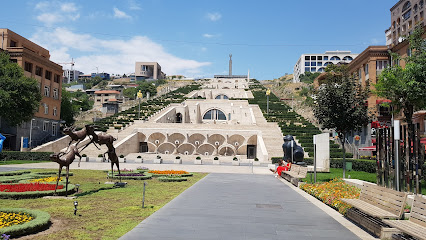
Vernissage
Explore Vernissage, Yerevan's bustling handicraft fair, where local artisans display unique handmade treasures and the spirit of Armenian culture thrives.
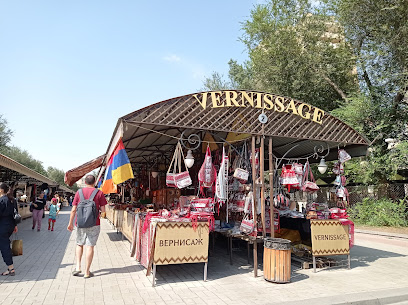
Khor Virap Monastery
Discover the rich spiritual heritage and stunning landscapes of Khor Virap Monastery, an iconic site in Armenia with breathtaking views of Mount Ararat.
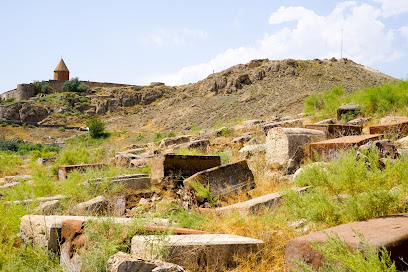
Geghard Monastery
Explore the breathtaking Geghard Monastery, a UNESCO World Heritage site, where ancient rock-hewn churches and stunning landscapes await.
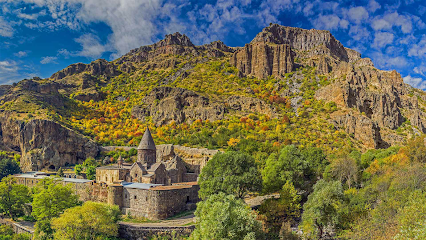
Noravank
Explore the enchanting Noravank Monastery, where history, architecture, and stunning landscapes converge in Armenia's breathtaking countryside.
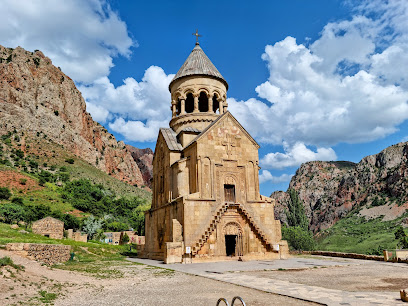
Amberd fortress
Discover the rich history and stunning views of Amberd Fortress, a medieval marvel nestled in the Armenian mountains, perfect for history lovers and adventurers alike.
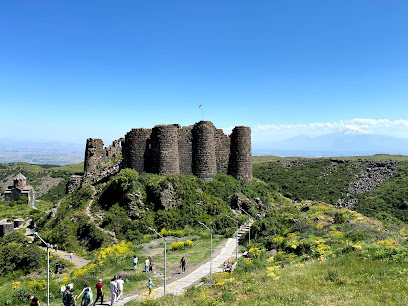
Saghmosavank
Explore the serenity and architectural beauty of Saghmosavank, a remarkable 13th-century Armenian monastery surrounded by breathtaking landscapes.
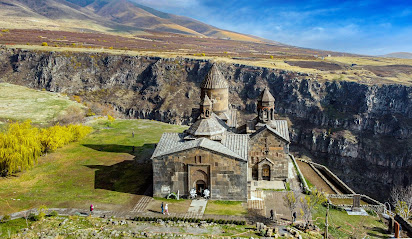
Areni-1 Cave
Discover Areni-1 Cave, an archaeological marvel in Armenia that reveals ancient winemaking secrets and stunning natural beauty.
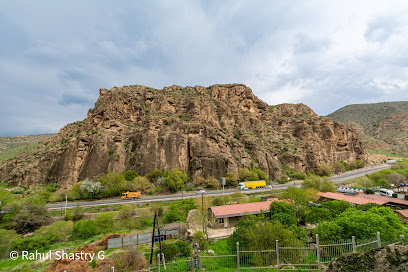
Charles Aznavour Square
Experience the vibrant essence of Yerevan at Charles Aznavour Square, a cultural hub filled with art, music, and delicious Armenian cuisine.
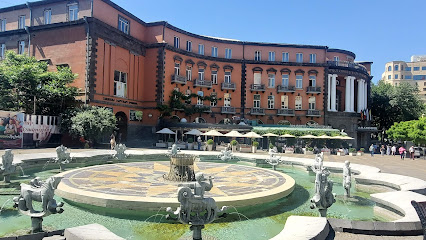
Orbelian Caravanserai
Explore the Orbelian Caravanserai, a historical landmark in Yeghegnadzor, where the legacy of the Silk Road comes alive through stunning architecture and rich culture.
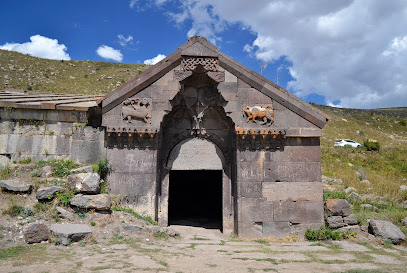
Momik WineCube
Discover the magic of Armenian winemaking at Momik WineCube in Areni, where tradition meets breathtaking views and exceptional wines.
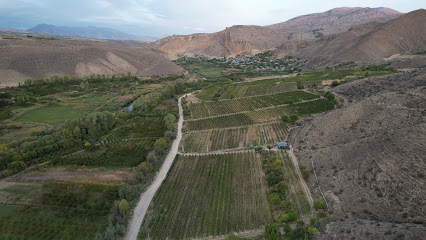
Areni Wine Factory
Discover the essence of Armenian winemaking at Areni Wine Factory, where tradition meets exquisite taste in the stunning Vayots Dzor region.
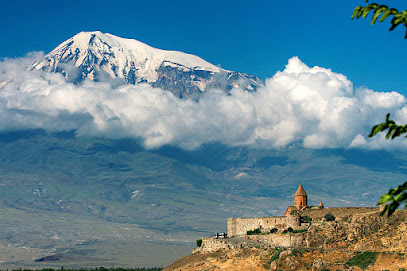
Smbataberd
Discover the ancient Smbataberd Fortress, a breathtaking site in Armenia offering stunning views and a glimpse into the region's rich history.
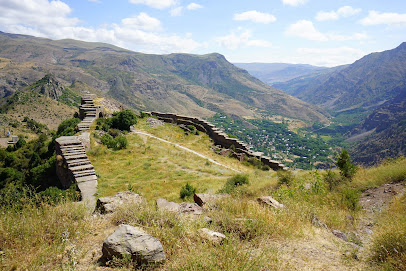
Tegher Monastery
Discover the spiritual and architectural wonders of Tegher Monastery, a serene Armenian gem that enchants every traveler with its rich history and breathtaking landscapes.
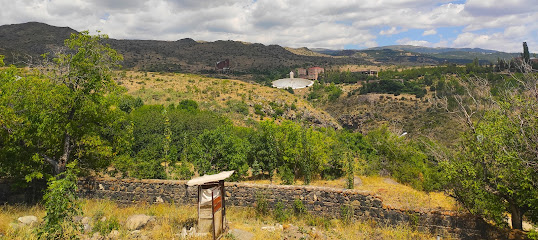
Gndevank
Discover the serene beauty and rich history of Gndevank Monastery, a must-visit destination in Armenia's enchanting landscape.
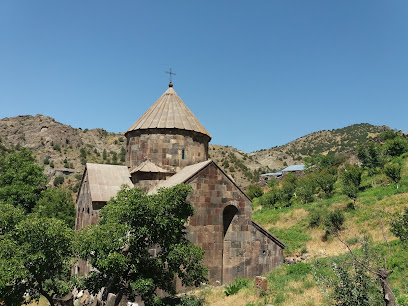
Unmissable attractions to see
Spitakavor
Explore the serene beauty of Spitakavor, a hidden Armenian church in Vernashen, perfect for culture lovers and tranquility seekers.
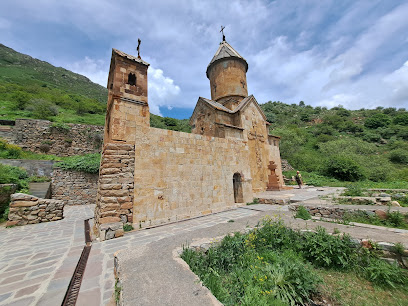
Paruyr Sevak House-Museum
Explore the Paruyr Sevak House-Museum in Zangakatun, a tribute to Armenia's literary heritage and a hub of cultural exchange.
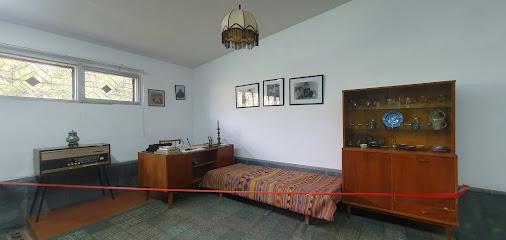
Paruyr Sevak House-Museum
Explore the legacy of Paruyr Sevak at his house-museum in Zangakatun, where Armenian culture and poetry come to life in a serene setting.

Tsakhats Kar
Experience the tranquil beauty and rich heritage of Tsakhats Kar, a stunning Armenian church nestled in the picturesque landscapes of Horbategh.
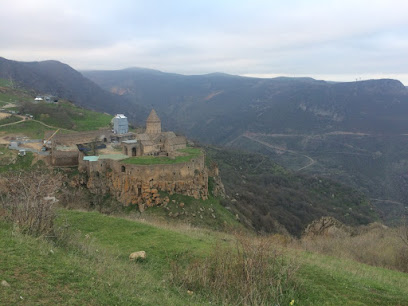
Goghtanik waterfall
Explore the enchanting Goghtanik Waterfall, a stunning natural attraction perfect for hiking enthusiasts and nature lovers in Armenia.
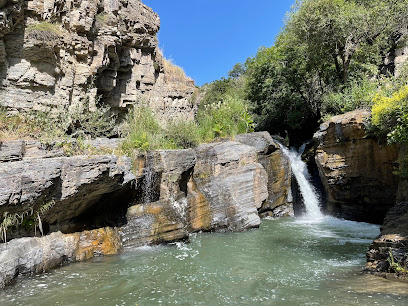
Engels Face
Explore the stunning Engels Face in Yelpin, Armenia - a breathtaking natural wonder and perfect spot for photography, hiking, and relaxation.
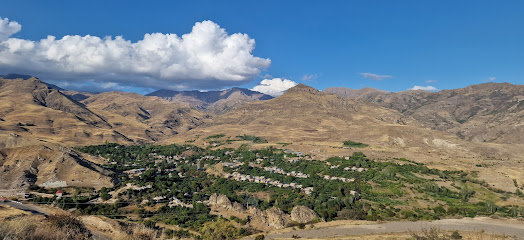
Agarakadzor bridge
Discover the mesmerizing beauty of Agarakadzor Bridge, a stunning tourist attraction in Yeghegnadzor, Armenia, perfect for nature lovers and photographers.
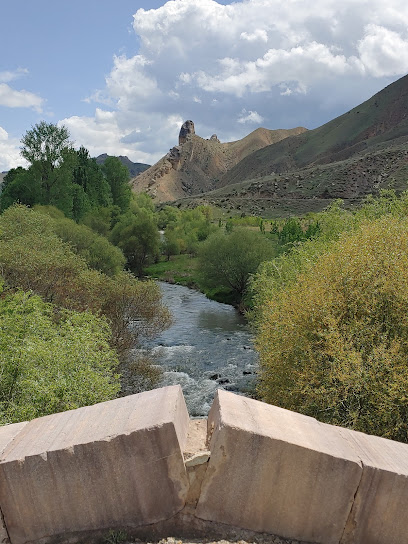
Heroes Alley
Explore Heroes Alley, a serene tourist attraction in Jermuk, Armenia, where history meets nature in a picturesque setting.
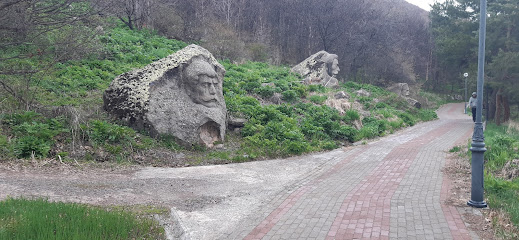
Симои Сар
Experience the natural beauty and cultural richness of Симои Сар in Malishka, a must-visit tourist attraction in Armenia.

Great Patriotic War Memorial Park
Explore the Great Patriotic War Memorial Park in Yeghegnadzor, a serene tribute to history and valor nestled in breathtaking natural beauty.
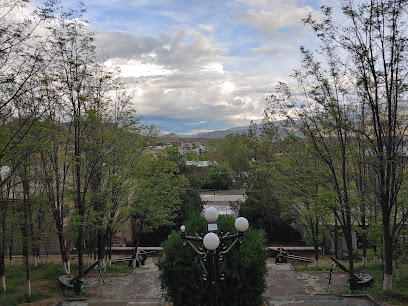
Արարատի մարզի ամենագեղեցիկ մայրամուտներ նկարելու տեղ
Discover the breathtaking beauty and rich cultural heritage of the Ararat Valley, a premier tourist attraction in Armenia, featuring stunning landscapes and local traditions.

Хижина монаха отшельника
Discover the serenity and historical significance of Khizina Monastery, a hidden gem in Armenia's beautiful Mozrov region, perfect for spiritual and scenic exploration.
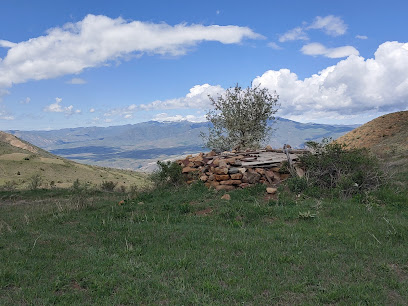
Yeghegnadzor Writing
Explore Yeghegnadzor Writing, a serene haven for creativity amidst Armenia's breathtaking landscapes, perfect for literature lovers and travelers alike.

Բեղլու գյոլ
Discover the picturesque village of Urtsadzor in Armenia, a hidden gem with stunning landscapes and rich cultural heritage.
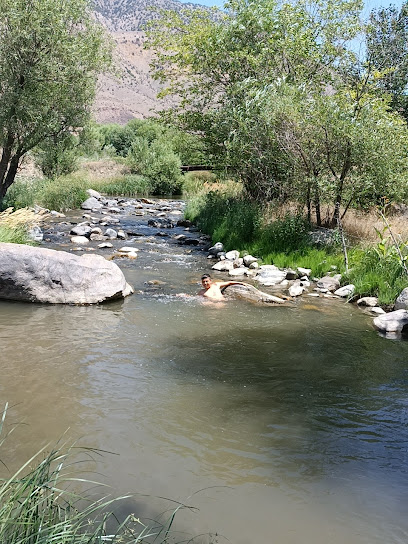
Թիթեռներ / Butterfly
Discover the beauty and tranquility of the Butterfly in Yeghegnadzor, a captivating tourist attraction amidst Armenia's stunning landscapes.

Essential places to dine
Lchak Restaurant Complex
Experience authentic Armenian cuisine at Lchak Restaurant Complex amidst stunning landscapes on your journey through Yeghegnadzor.
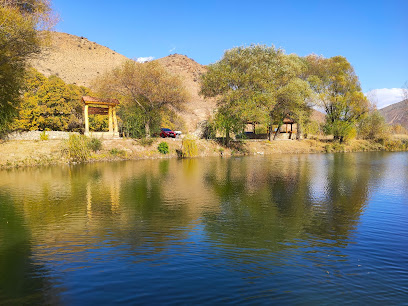
Matevosyans' HOUSE
Discover the rich flavors of Armenia at Matevosyans' HOUSE, where tradition meets taste in a charming setting.
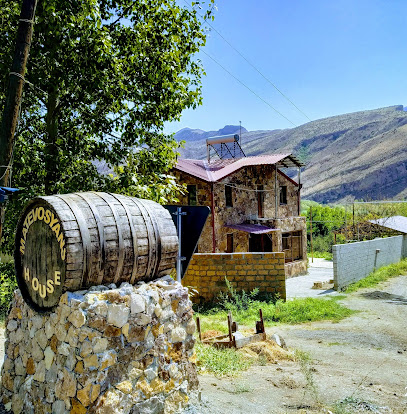
Food Court Yeghegnadzor
Experience authentic Armenian flavors at Food Court Yeghegnadzor – A vibrant dining destination for every palate.
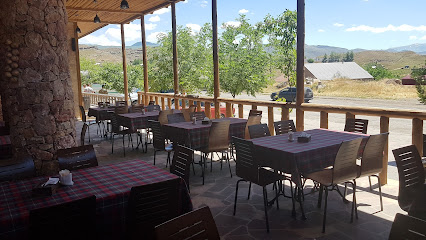
Luna
Discover authentic Armenian cuisine at Luna on Jermuk Highway—where every bite tells a story.

Wine House Mher
Discover authentic Armenian flavors at Wine House Mher in Areni – where tradition meets exquisite local wines.

Arpi Hacatun
Discover Arpi Hacatun: A vibrant fast food destination offering delectable bites and a welcoming atmosphere in the heart of Armenia.
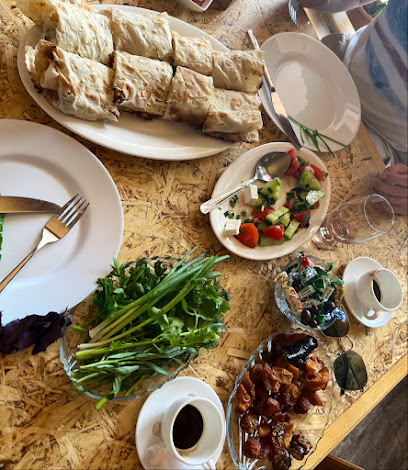
Edem Restaurant
Discover authentic Armenian flavors at Edem Restaurant in Areni village, where culinary tradition meets breathtaking views.
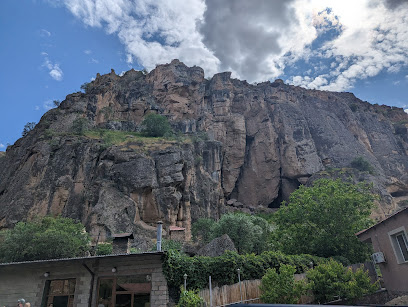
Full Tray Areni
Experience authentic Armenian cuisine at Full Tray Areni - where tradition meets flavor in a family-friendly atmosphere.
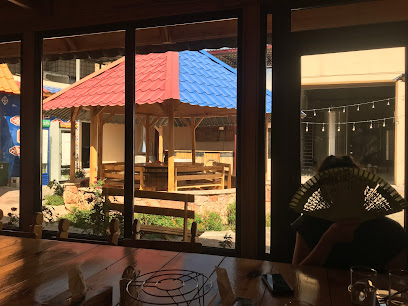
Որսկան/ VORSKAN/
Discover authentic Armenian flavors at VORSKAN in Vayk - a culinary experience blending tradition with innovation.
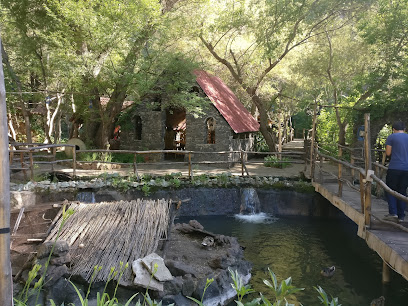
Ar Areni Restaurant
Discover traditional Armenian flavors at Ar Areni Restaurant in the beautiful village of Areni—where authentic cuisine meets local charm.
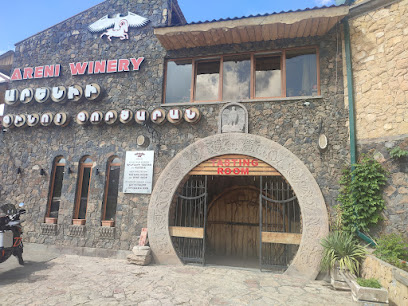
ArpaParnas Wine & Rest Valley
Experience the perfect blend of exquisite Armenian cuisine and refreshing aquatic fun at ArpaParnas Wine & Rest Valley in Areni.
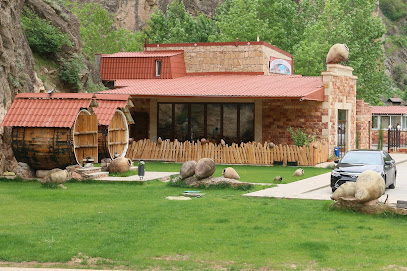
Nazaryans' House
Discover authentic Armenian flavors at Nazaryans' House in Areni - where every meal is a celebration of tradition and hospitality.
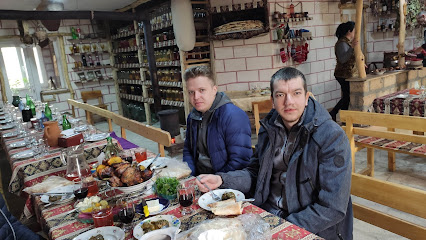
Canyon Restaurant
Discover exceptional Armenian cuisine with stunning canyon views at Canyon Restaurant in Jermuk.
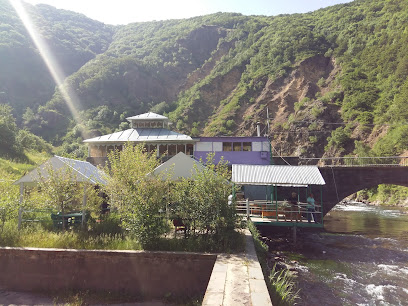
Kghziner
Discover Kghziner: An authentic Armenian dining experience in Vayots Dzor with traditional dishes that delight the senses.
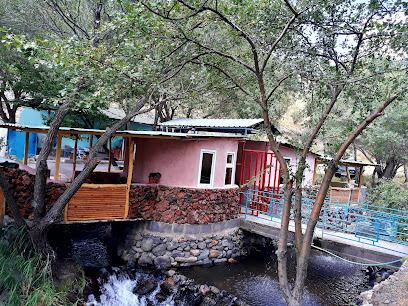
Կանաչ կղզի Green Island
Savor authentic Armenian flavors at Green Island in Areni - where tradition meets taste in a charming setting.
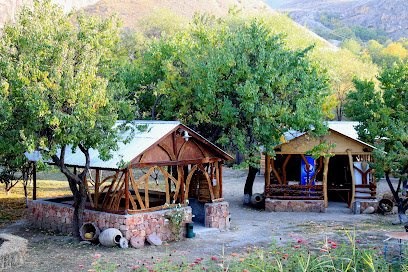
Markets, malls and hidden boutiques
Օժիտ խանութ սրահ Եղեգնաձորում
Explore the latest fashion trends at the premier clothing store in Yeghegnadzor, offering unique styles and exceptional quality for every occasion.
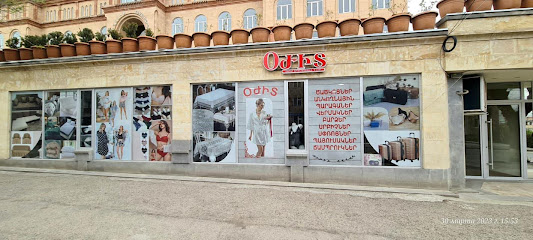
RIGHT MARKET
Explore the flavors of Armenia at Right Market in Yeghegnadzor, where local produce meets international delicacies.
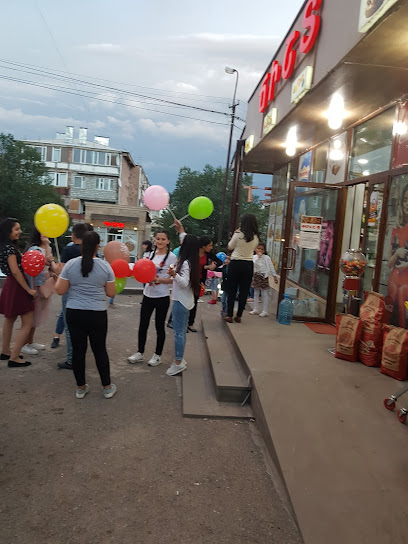
Ճիշտ Մարկետ
Discover the charm of Yeghegnadzor at Ճիշտ Մարկետ, a modern shopping mall offering local crafts, international brands, and delightful dining options.
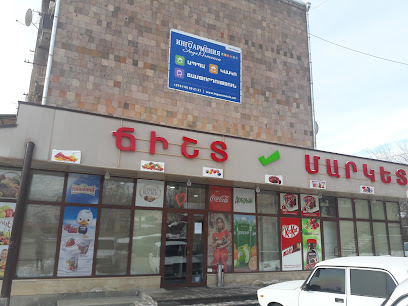
VaNoNa Market
Explore the vibrant VaNoNa Market in Yeghegnadzor, a shopping destination filled with local crafts, delicious Armenian cuisine, and a lively atmosphere.

ARDO Market
Explore ARDO Market in Aghavnadzor for an authentic taste of Armenian and European cuisine, featuring fresh produce and local specialties.
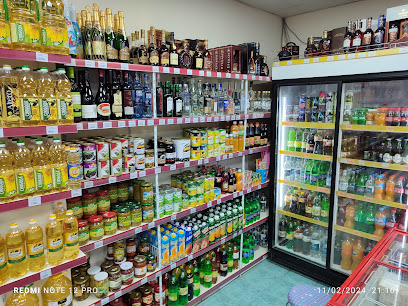
Prestige
Discover Yeghegnadzor's Prestige Shopping Mall: A vibrant hub of culture, shopping, and local cuisine awaits every traveler.

YEVA FASHION
Discover unique Armenian fashion at Yeva Fashion in Yeghegnadzor, blending traditional styles with contemporary trends.

Suvorov koshiki ev hagusti srah
Discover the essence of Armenian fashion at Suvorov Koshiki, a clothing store that blends tradition with contemporary style in Vayk.

Сельпо
Discover the heart of Armenian culinary culture at Сельпо in Yeghegnadzor, where fresh local products meet warm hospitality.
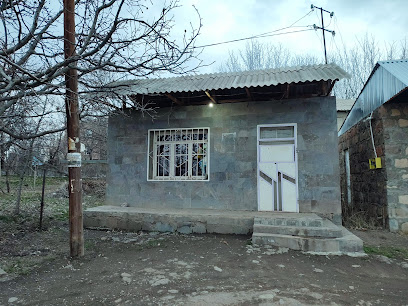
Food And Presents
Explore the unique flavors and artisanal crafts at Food And Presents in Jermuk, a treasure trove for tourists seeking local delicacies and gifts.
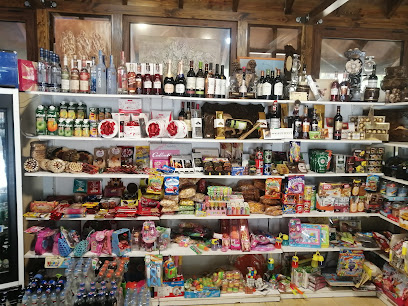
Vachik-jan Market | Магазин Продуктов
Discover the rich flavors of Armenia at Vachik-jan Market, Yeghegnadzor's top grocery store for fresh local produce and culinary delights.
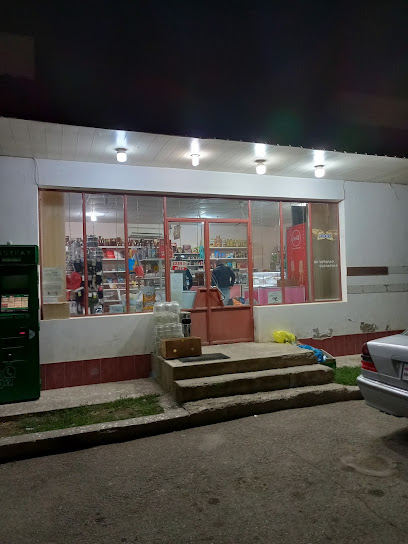
Hagusti ashkharh
Explore the unique blend of traditional and modern Armenian fashion at Hagusti Ashkharh in Yeghegnadzor, where every piece tells a story.

Sid Shin
Explore Sid Shin for exquisite furniture accessories that enhance your home with style and creativity, a must-visit for design enthusiasts.

Nreni
Discover Nreni, Areni's charming souvenir store, offering unique handcrafted treasures that capture the spirit of Armenian culture.
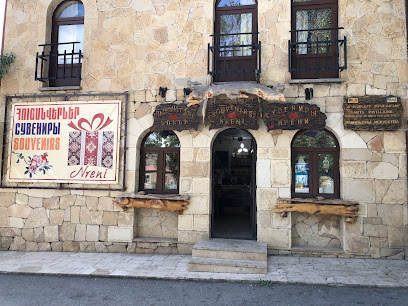
Ехегнадзор Микояна 8/1
Discover the charm of Yeghegnadzor's local store, where authentic Armenian crafts and delicacies await your exploration.

Essential bars & hidden hideouts
Matevosyans' HOUSE
Discover the authentic flavors of Armenia at Matevosyans' HOUSE, where every meal is a celebration of culinary heritage in the heart of Vayots' Dzor.
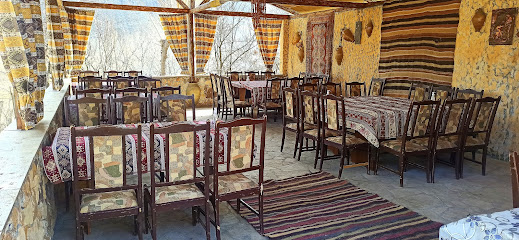
Food Court Yeghegnadzor
Discover the flavors of Armenia at Food Court Yeghegnadzor, where local and international cuisines meet in a vibrant dining atmosphere.

Wine House Mher
Discover the authentic flavors of Armenia at Wine House Mher, where exquisite cuisine meets exceptional local wines in a charming setting.
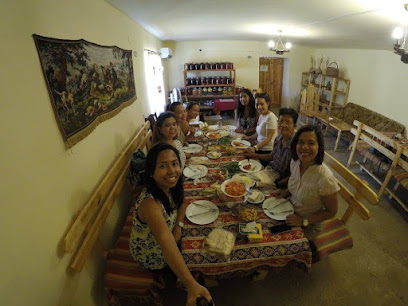
Old Bridge Winery
Experience the magic of Armenian wine at Old Bridge Winery, where exquisite flavors and stunning landscapes meet.
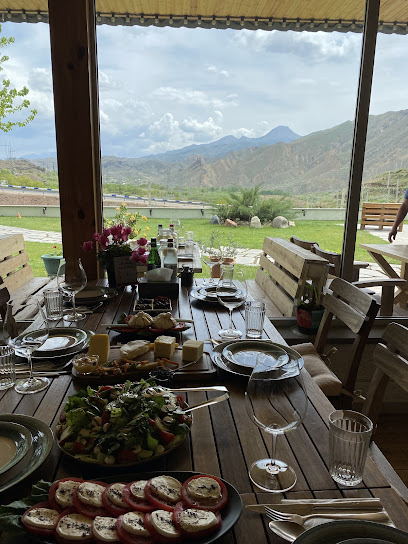
Arpeni Tavern
Experience the essence of Armenian wine culture at Arpeni Tavern in Areni, where rich flavors and warm hospitality await every visitor.
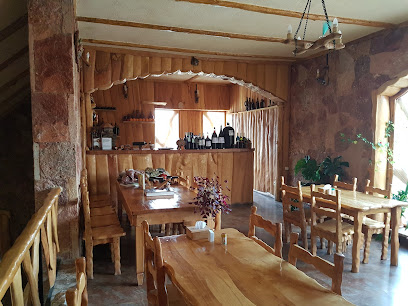
Որսկան/ VORSKAN/
Discover the rich flavors of Armenian cuisine at VORSKAN, Vayk's top restaurant for a delightful dining experience.
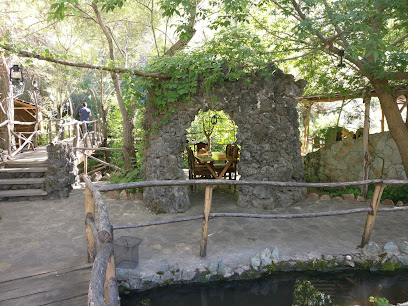
Ar Areni Restaurant
Experience the essence of Armenian cuisine at Ar Areni Restaurant, where tradition meets flavor in a charming village setting.

Домашнее вкусное вино у Айка
Experience the essence of Armenian winemaking at Aik's Homemade Wine in Areni, where tradition meets taste in every glass.
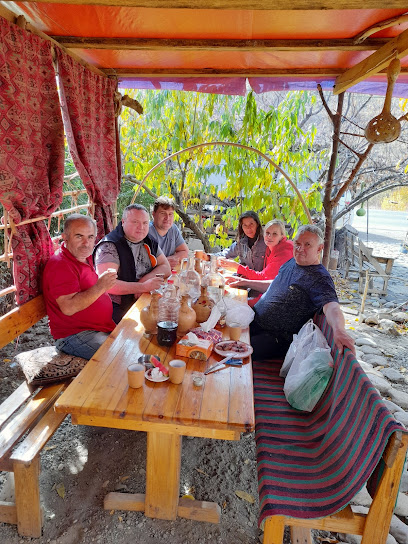
Vardges' Stone Bar
Experience the warmth of Armenian hospitality at Vardges' Stone Bar, a charming spot near Noravank Monastery offering local drinks and stunning views.

Journey Cafe & Hotel
Discover the perfect blend of comfort and culinary delights at Journey Cafe & Hotel in Chiva, where every meal is an experience.
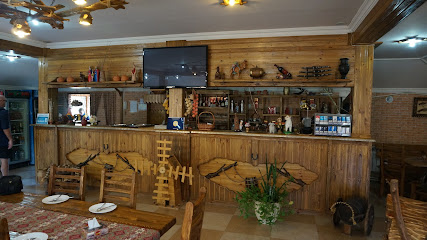
Baghabert
Experience the rich flavors of Armenian cuisine at Baghabert Restaurant in Jermuk, a must-visit for food lovers seeking authenticity.
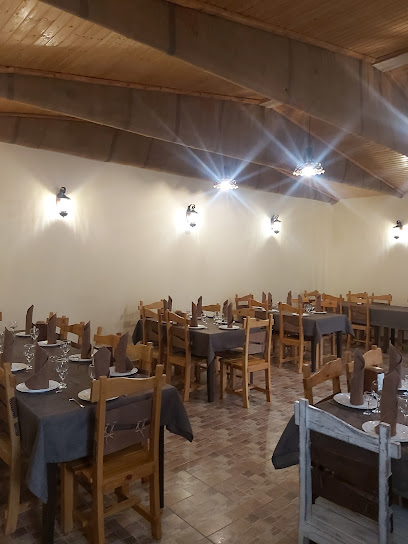
Jun Simon Resto Bar Food
Experience authentic Armenian barbecue at Jun Simon Resto Bar Food in Getap, where every dish is a celebration of local flavors.
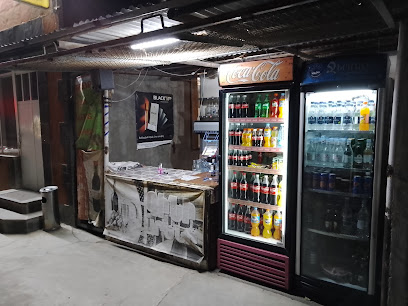
Սրճարան Ռայ
Experience the warmth of Yeghegnadzor at Սրճարան Ռայ, where delightful refreshments meet a cozy atmosphere in a charming lounge.

Bardiner Restaurant
Experience authentic Armenian cuisine at Bardiner Restaurant in Getap, where every meal is a delightful journey of flavors.
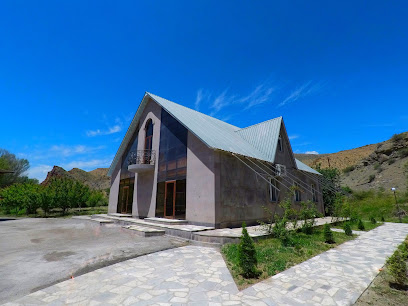
BOTUL beer & more
Explore the vibrant craft beer scene at BOTUL Beer & More, a brewpub in Tumanyan offering local flavors and a cozy atmosphere perfect for tourists.

Local Phrases about Vayots Dzor Region
-
- Helloբարև
[barev] - Goodbyeհրաժարվեր
[hradzharver] - Yesայո
[ayo] - Noոչ
[voch] - Please/You're welcomeխնդրում եմ
[khndrum em] - Thank youՇնորհակալ եմ
[shnorhakal em] - Excuse me/SorryՆերքեւ եմ
[nerkhev em] - How are you?Ինչպես եք?
[inchpes ek?] - Fine. And you?Շատ լավ. Անդ դու?
[shat lav. and du?] - Do you speak English?Անգլերեն խրախուսե՞ք
[angleren khrakhusek?] - I don't understandԵս չափահաս
[yes ch'apahas]
- Helloբարև
-
- I'd like to see the menu, pleaseԽնդրում եմ մենյունը տեսնել
[khndrum em menuyn tsel] - I don't eat meatԵս միս չուտում
[yes mis ch'utum] - Cheers!Կենսավորիր!
[kensavorir] - I would like to pay, pleaseԽնդրում եմ վճարել
[khndrum em vcharrel]
- I'd like to see the menu, pleaseԽնդրում եմ մենյունը տեսնել
-
- Help!Օգնեք!
[ognegh] - Go away!Հեռացրեք!
[herats'rekh] - Call the Police!Զանգ ավելացրեք ոստիկանություն
[zang avelats'rekh ostikanut'yun] - Call a doctor!Զանգ ավելացրեք բժշկ
[zang avelats'rekh bzhshk] - I'm lostԵս կուտակվել եմ
[yes kootakvel em] - I'm illԵս հիվանդ եմ
[yes hivand em]
- Help!Օգնեք!
-
- I'd like to buy...Խնդրում եմ գնել
[khndrum em gnel] - I'm just lookingՈւշադրություն եմ
[ushadrut'yun em] - How much is it?Քանի է դառնա
[qani e darna] - That's too expensiveԴա շատ թանկ է
[da shat tank e] - Can you lower the price?Կարող եք գնգիլ գինը
[karogh ek gngil gine]
- I'd like to buy...Խնդրում եմ գնել
-
- What time is it?Ինչ ժամ է այսօր
[inch zam e aysor] - It's one o'clockՄեկը է
[mek'y e] - Half past (10)Քսան աղջիկ (10)
[qsan aghjik (10)] - MorningԱռավոտ
[aravot] - AfternoonԿեսգիշ
[kesgish] - EveningԵրեկ
[yerek] - YesterdayԵրեկ
[yerek] - TodayԱյսօր
[aysor] - TomorrowՎաղը
[vagh] - 11
[1] - 22
[2] - 33
[3] - 44
[4] - 55
[5] - 66
[6] - 77
[7] - 88
[8] - 99
[9] - 1010
[10]
- What time is it?Ինչ ժամ է այսօր
-
- Where's a/the...?Այստեղ որ է ...?
[aystegh vor e ...?] - What's the address?Հասցեն ինչ է?
[hascen inch e?] - Can you show me (on the map)?Կարող եք ցուցադրել (քարտեզի վրա)?
[karogh ek tsuts'adrel (kartezi vra)?] - When's the next (bus)?Ի՞նչ ժամին է հաջորդը (ավտոբուսը)
[inche zhamin e hajordy (avtobusy)] - A ticket (to ....)Բիլետ (մինչև ...)
[bilet (minch'ev ...)]
- Where's a/the...?Այստեղ որ է ...?
History of Vayots Dzor Region
-
Vayots Dzor Region has been inhabited for millennia, with human settlements dating back to the Stone Age. Archaeological excavations have uncovered numerous artifacts that testify to the region's ancient past, including petroglyphs, tools, and pottery. The area's fertile valleys and strategic location along trade routes made it an ideal place for early communities to thrive.
-
During the 9th to 6th centuries BCE, Vayots Dzor was part of the Kingdom of Urartu, an ancient civilization known for its advanced metallurgy and impressive fortifications. The remains of Urartian fortresses and settlements can still be found in the region, providing a glimpse into the life and culture of this powerful kingdom.
-
Vayots Dzor is renowned for its medieval Christian heritage, with numerous monasteries and churches dotting the landscape. The most famous of these is the Noravank Monastery, founded in the 13th century. This architectural masterpiece is set against a backdrop of stunning red cliffs and is known for its intricate carvings and khachkars (cross-stones). Other significant religious sites include the Tsakhats Kar Monastery and the Smbataberd Fortress.
-
During the Middle Ages, Vayots Dzor was a crucial part of the Silk Road, the ancient network of trade routes that connected the East and West. The region's caravanserais, such as the Selim Caravanserai, served as vital resting points for merchants and travelers. These structures provided shelter and supplies, facilitating the exchange of goods, ideas, and cultures between distant lands.
-
In the 13th century, the Mongol Empire expanded into Vayots Dzor, bringing significant changes to the region's political and social landscape. The Mongol invasion led to the decline of many local fortresses and settlements, but it also resulted in new cultural influences and the introduction of new technologies. Despite the turmoil, Vayots Dzor's monasteries continued to flourish as centers of learning and spirituality.
-
From the 16th to the 19th centuries, Vayots Dzor was contested by the Persian and Ottoman Empires. The region frequently changed hands, leading to periods of conflict and hardship for its inhabitants. However, these interactions also brought cultural exchanges and the blending of different traditions, leaving an indelible mark on the region's architecture, cuisine, and customs.
-
In the 20th century, Vayots Dzor became part of the Soviet Union, leading to significant changes in its economy and infrastructure. The region saw the development of new industries, including winemaking, which has become a hallmark of Vayots Dzor's modern identity. With the fall of the Soviet Union in 1991, Armenia gained independence, and Vayots Dzor began to embrace its rich cultural heritage and natural beauty as a foundation for tourism and economic growth.
Vayots Dzor Region Essentials
-
Vayots Dzor Region is located in the southeastern part of Armenia. The nearest international airport is Zvartnots International Airport in Yerevan, approximately 120 kilometers away. From Yerevan, you can take a taxi, a minibus (marshrutka), or a coach bus to Vayots Dzor. The journey typically takes around 2 to 3 hours by road. Renting a car is also a convenient option if you prefer to explore at your own pace.
-
Within Vayots Dzor, transportation options include taxis, minibuses (marshrutkas), and rental cars. Taxis are readily available and can be hailed on the street or booked via phone apps. Marshrutkas operate between towns and villages in the region and are an affordable way to travel. Renting a car is a great option for those who want the freedom to explore remote areas and attractions at their leisure.
-
The official currency in Armenia is the Armenian Dram (AMD). Credit cards are accepted in some hotels, restaurants, and shops in larger towns like Yeghegnadzor, but it is advisable to carry cash, especially in smaller establishments and rural areas. ATMs are available in the main towns, but it is wise to withdraw sufficient cash in Yerevan before traveling to more remote areas.
-
Vayots Dzor Region is generally a safe destination for tourists. However, it is advisable to take standard precautions. Avoid walking alone at night in unfamiliar areas and keep an eye on your belongings in crowded places. There are no specific high-crime areas targeting tourists, but it is always best to stay vigilant and aware of your surroundings.
-
In case of emergency, dial 911 for immediate assistance. Local police stations and medical facilities are available in larger towns like Yeghegnadzor. It is recommended to have travel insurance that covers medical emergencies. For minor health issues, there are pharmacies in the towns where you can purchase over-the-counter medications. Ensure you have the contact details of your embassy or consulate in Armenia.
-
Fashion: Do dress modestly, especially when visiting religious sites. Avoid wearing revealing clothing. Religion: Do respect local customs and traditions. Always cover your head when entering churches and monasteries. Public Transport: Do be respectful and give up your seat to elderly passengers. Don’t eat or drink on public transport. Greetings: Do greet people with a handshake. A slight bow of the head is also a sign of respect. Eating & Drinking: Do try local delicacies and accept food offerings graciously. Don’t refuse hospitality, as it is considered impolite.
-
To experience Vayots Dzor Region like a local, visit the local markets where you can buy fresh produce and traditional Armenian goods. Engage with locals, as they are often friendly and willing to share stories about the region's history and culture. Don’t miss visiting the Noravank Monastery, a stunning example of Armenian architecture nestled in a scenic gorge. For a unique experience, take part in local wine-tasting tours in Areni, known for its ancient winemaking tradition.
Nearby Cities to Vayots Dzor Region
-
Things To Do in Jermuk
-
Things To Do in Yerevan
-
Things To Do in Goris
-
Things To Do in Tsaghkadzor
-
Things To Do in Kapan
-
Things To Do in Dilijan
-
Things To Do in Aparan
-
Things To Do in Ganja
-
Things To Do in Vanadzor
-
Things To Do in Haghpat
-
Things To Do in Alaverdi
-
Things To Do in Gyumri
-
Things To Do in Yevlakh
-
Things To Do in Mingachevir
-
Things To Do in Signagi



